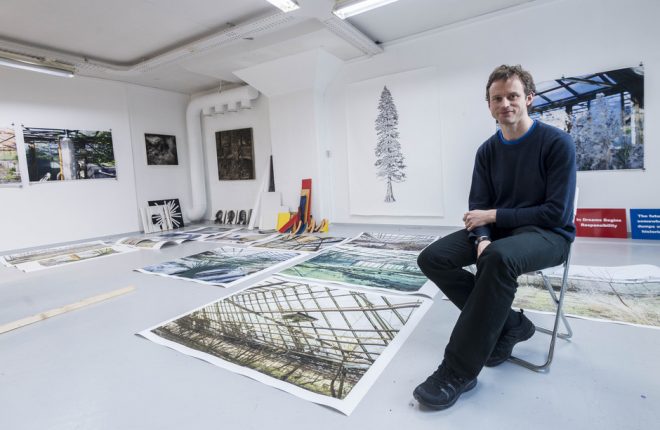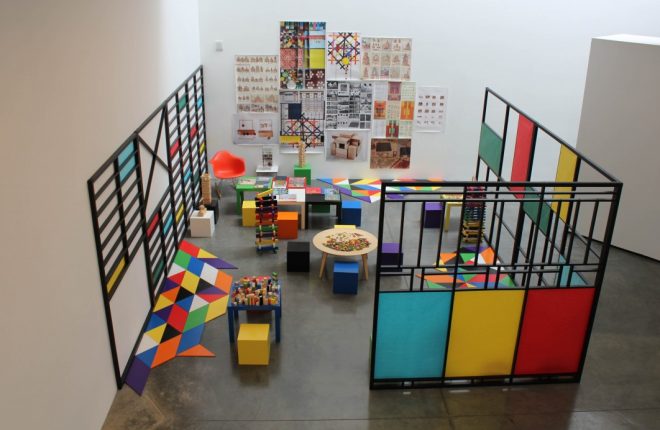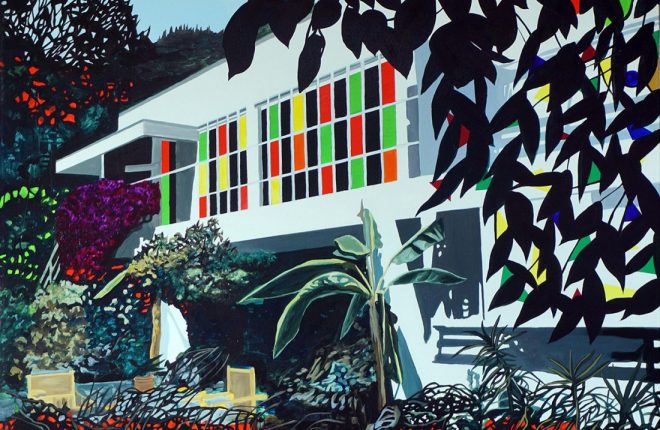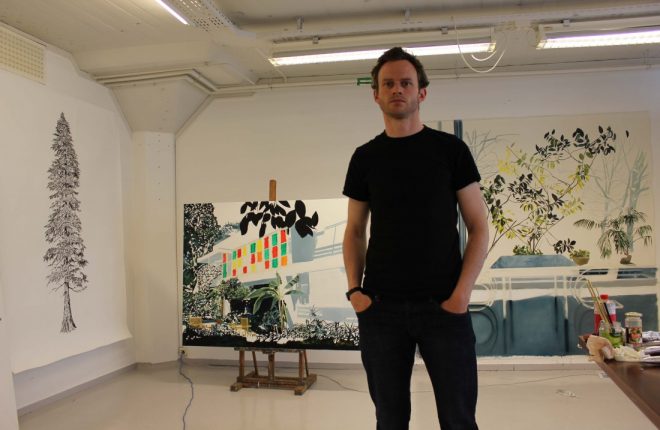
Eamon O’ Kane
With the Earagail Arts Festival just days away, Donegal born and now Danish based artist Eamon O’Kane has been talking about his exhibition ‘Exploring Architecture’ which is set to open in the Regional Cultural Centre in Letterkenny on Saturday, his early memories of growing up in the wonderful setting of Cavanacor House and how this has impacted on his work as an artist and his life today in Denmark.
“I grew up in the countryside near Lifford and spent a great deal of my childhood in the forest and gardens of a house built in the early 1600s,” said Eamon.
“Cavanacor House, the home I grew up in, is a house steeped in history where my earliest memories formed and it has maintained a key position in my art practice. In fact it could be argued that I have always made work related to this house and to the relationship between landscape, architecture and history.”

Exploring Architecture is a mid-career partial retrospective of Eamon’s work including a range of media on the subject of architecture and forms part of a series of art & architecture exhibitions during this years’ Earagail Arts Festival.
“The works in the Exploring Architecture exhibition stems from my interest in the manmade and the natural world,” said Eamon. “The exhibition comprises of an overview of my earliest paintings from the Studio in the woods series. In these meditations I was using modernist architecture as a way to query ideas of space, connectivity and engagement with society.”
In a review of one the first exhibitions of these paintings the Irish Times critic Aidan Dunne commented: “The remote, at times forbidding settings of these prototypical studios also raise the question of whether the artist is better placed in an ivory tower or in the midst of social space.”
Eamon added: “The works also drew inspiration from fairytale and myth especially the stories of the Brothers Grimm and other German fairytales. I was attempting to convey a slightly ominous quality in the paintings, perhaps the dream and desire of the perfect space becoming a dystopia, which eats one up, like the witch hiding in the house made of sweets in Hanzel and Gretel.”
Now based in Denmark and Norway, Eamon believes life in these scandanavian countries have a lot in common with his early years in Donegal.
“I have been living in Denmark since 2007 and between Norway and Denmark since 2011. I am professor of Visual Art and Painting at the University of Bergen. Life in Scandinavia has a lot in common with my memories of growing up in Co. Donegal, the weather is not dissimilar and in Denmark we live in the countryside so my children have a similar experience of nature as I did growing up.”
“The landscape in Denmark is quite flat but in Norway there is a lot of places which have similarities to the Irish countryside. Norway is number one in the happiest place to live and Denmark is number two (having been number one for a number of years) and that is reflected in our reality as I see both countries are very good on many levels especially as places to bring up children.”
Eamon is also working on creating the Drop-in, Hands-on Art-room in the Regional Culture Centre this year which will include an interactive installation making direct visual and conceptual reference to educational play objects devised by educator and inventor of kindergarten Friedrich Frobel.

“The first encounter of the work of Frederich Fröbel that I remember was through researching the organic architecture of Frank Lloyd Wright when I was working on the ´Studio in the Woods´ series of paintings. It is interesting reflecting on it now that at the time Fröbel was but a footnote in my investigations and I didn’t come to refer directly to his legacy until much later.
“The result of my research mainly takes the form of interactive installations, that have been shown in exhibitions in Los Angeles, New York, Limerick, Quimper and Dublin Contemporary 2011, taking inspiration from artists, architects, and designers such as Frank Lloyd Wright, Le Corbusier, Piet Mondrian, Wassily Kandinsky and Charles Eames, educated in early childhood using the methods of Frederich Froebel.”
“These highly interactive installations cross a wide range of disciplines and social structures examining Froebel’s legacy whilst exploring the links between the natural world and the development of creativity. Beginning with the historical context of the research my artworks develop the argument that within Froebel´s legacy we can locate the seedbed of modern art. Froebel designed the educational play materials known as Froebel Gifts, or Fröbel gaben, which included geometric building blocks and pattern activity blocks. With its emphasis on abstract decomposition and building up from elemental forms, the original kindergarten system of the mid-nineteenth century created an education and design revolution that profoundly affected the course of modern art and architecture, as well as physics, music, psychology and the modern mind itself.
“My installations could also be referred to as archives or ‘research-based-projects’. They are participative in the sense that the audience can change the work by using the materials placed at their disposal. In a truly experimental way the straightforward boundaries between production and reception have become permeable.”

Eamon has had a longstanding relationship with the Regional Cultural Centre, his MA show was exhibited at the old Letterkenny Arts Centre in 1999 as part of that year’s Earagail Arts Festival and the RCC commissioned his major ‘The House and the Tree’ project in 2008. With the RCC celebrating it’s 10th birthday Eamon pays tribute to the role of the RCC in his own development as an artist and believes that the Regional Cultural Centre is an incredibly important resource for Donegal.
“The Regional Cultural Centre in Letterkenny is an incredibly important resource in Co. Donegal and I have greatly valued my connection with the RCC over the years. The last show I did at the RCC in 2008 was a key exhibition in my development as an artist and it is fantastic to be afforded such an opportunity which went on to be developed into an internationally touring body of work and which was exhibited at Dublin Contemporary in 2011.”
“I remember visiting the Orchard Gallery in Derry as a child and teenager, seeing exhibitions by Richard Hamilton, Rita Donagh, Richard Long and Anthony Gormley and now that the orchard gallery has been closed for many years exhibition spaces such as the RCC, CCA and Void in Derry provide that much needed access to culture for the local community.”









